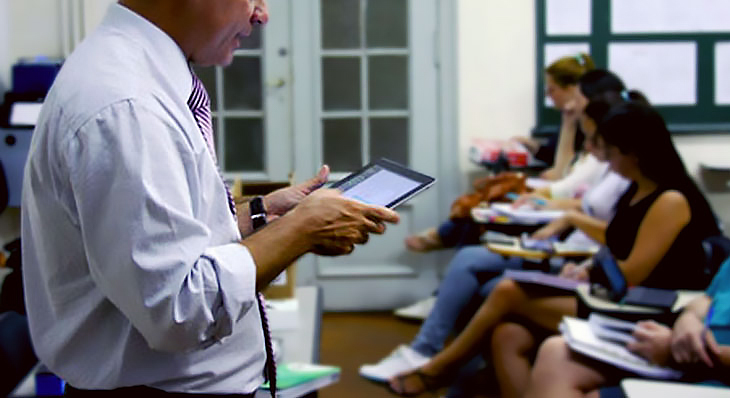
Teacher Tips for Presenting at Education Conferences
This is a guest post from educator and PioNear Rachelle Wooten.
So your proposal was accepted at the next education conference? Congratulations! When it comes to sharing your experiences as an educator at a conference, it can be very exciting, but also nerve-racking if it’s your first time. What if the WiFi is slow? What if you forget something? What if the audience isn’t energized? Here are some tips that can help you present with confidence at your next conference.
Know your audience: Like students, all educators are different. Some prefer to learn in a hands-on environment, while others prefer to listen to a lecture-style presentation. If you are presenting to an audience of classroom teachers, they will be looking for practical tools and strategies to use in their classrooms right away. On the other hand, administrators and school leaders may be looking for strategies that support learning and are reflective of best practices. Whatever the case, find a way to know who is in your audience. Larger conferences, like the International Society for Technology in Education (ISTE), allow workshop presenters to communicate with their participants prior to the conference. If you do not have that privilege, you can use Nearpod’s poll feature or open-ended question at the beginning of your workshop to learn a bit more about the audience.
Inspire your audience: By the end of your session, you’ll want your attendees to be excited and prepared to use what you shared. If you are looking to inspire your audience, show them the impact your idea, tool, or approach will have on students. Consider sharing examples of what student projects looked like, audio recordings of student reflections, or video of what impact it made in your learning environment. Each of these helps teachers take what they see and hear, and determine what it will look like in their own learning environments.
Nearpod can help you share your story. Upload a video of your students working in their maker-space, record student reflections and share them as audio clips, or share photos of students collaborating in your classroom. Any of these tips will leave your audience inspired and eager to apply what they learned in your session.
Listen to your audience: David Weinberger, author and philosopher, says, “The smartest person in the room is the room itself.” Sure, this is your session and you are eager to share your experience, but there is also a room full of participants who may have questions, comments, and insights to share. In order to make your session a memorable experience, find a way to hear from “the room”. You could use a “wow and wonder” strategy or “what? so what? now what?”. These kind of reflection questions help your attendees internalize the content you’ve shared.
It’s easy to capture audience insights using Nearpod. You can use the polling feature, open ended questions, or the interactive draw-it feature. If there are great responses from participants, share them with others in the room to extend discussion.
Give to your audience: Your content was great, the WiFi worked well, and you are almost done. Yes, almost, because you want to leave your audience with resources to help them apply what they learned in your session. A few ways to accomplish this are:
~ Provide handouts for each audience member,
~ Share links to a website with resources you used during the session
~ Share your session presentation as a Nearpod self-paced homework link
Finally, it never hurts to have prizes or giveaways such as t-shirts, subscriptions, or lessons. Many companies are happy to support presenters, and the best way to ask is over Twitter (reach out to Nearpod at @nearpod).
Ultimately, nothing beats preparedness. Take the time to design a quality presentation for your audience, identify the key points and cover them during your session, and practice in front of friends, family, or colleagues. The tips above work best when they are coupled with solid preparation. Best of luck with your presentation!

Nearpod’s award-winning platform is used by thousands of schools around the globe, transforming classroom engagement.








